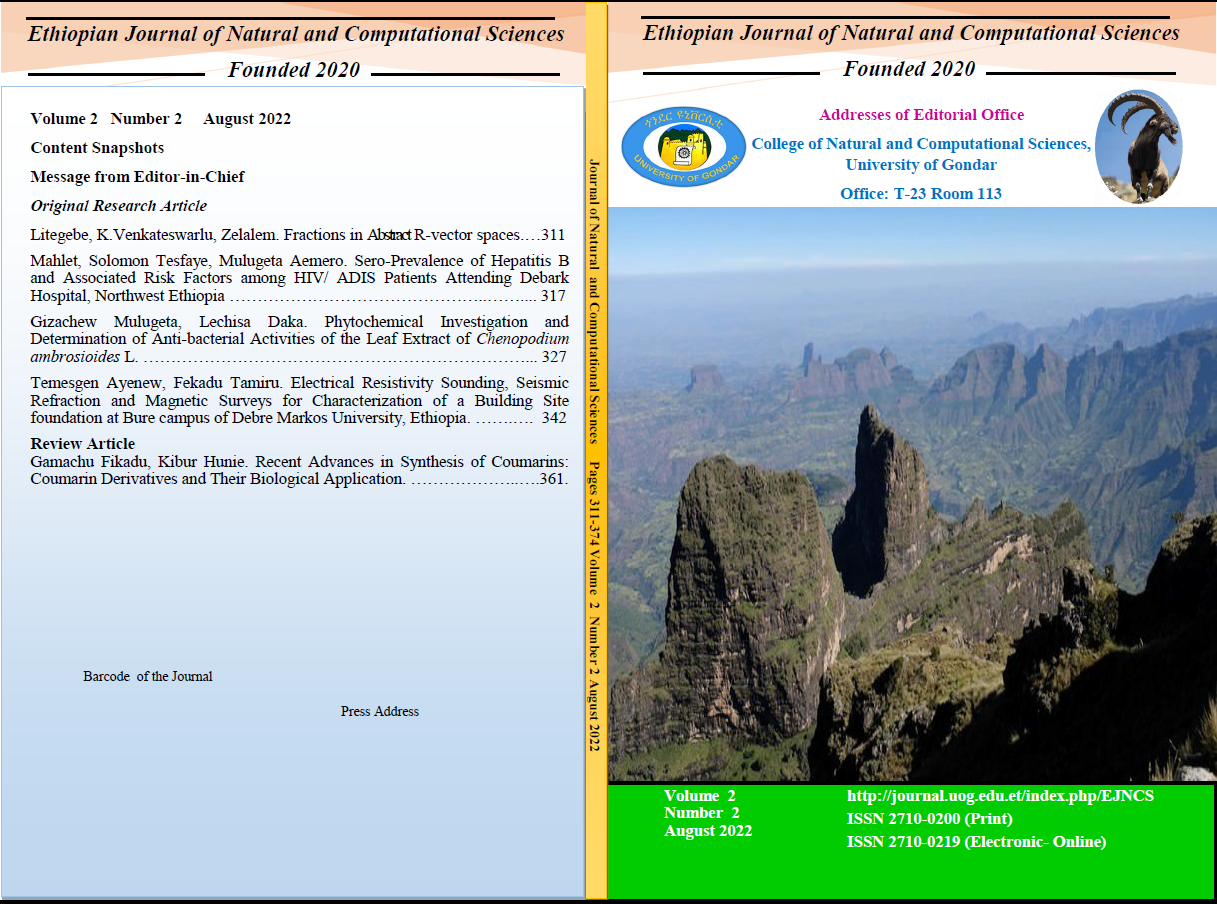Phytochemical Investigation and Determination of Anti-bacterial Activities of the Leaf Extract of Chenopodium ambrosioides L.
Keywords:
Phytochemicals, Chenopodium ambrosioides, Anti-bacterial ActivityAbstract
Chenopodium ambrosioides L. is an herbaceous shrub that belongs to the family Chenopodiaceae. In Ethiopia, it has been used to treat different alignments, particularly to detoxify snake bites, as an anthelmintic, analgesic and anti-inflammatory. This study aimed to investigate the phytochemical constituents, determine the anti-bacterial activities and characterize and elucidate the structure of pure isolated compounds from the leaves of C. ambrosioides. The powdered leaves were extracted through maceration using hexane, acetone and methanol as solvents. About 2% of the crude leave extract obtained was the methanol extract, which indicated the leaves of C. ambrosioides contain more polar phytochemicals. The phytochemical screening of the extracts revealed the presence of alkaloids, terpenoids, flavonoids, tannins, saponins and phenols. The crude leaf extracts of hexane, acetone, and methanol, each 100 mg/mL, were tested for the in-vitro antibacterial activity using the disc diffusion method against three pathogens- S. aureus (gram-positive), E. coli and Ps. Aeruginosa (gramnegative). The maximum antibacterial activity was exhibited in acetone crude extract against S. aureus and E. coli with the inhibition diameter of 11 mm and 10 mm, respectively. The standard drug Erythromycin was used as a positive control and dimethyl sulfoxide was used as a negative control. The acetone crude extract was subjected to further chromatographic separation using n-hexane:ethyl acetate solvent ratio in increasing order of polarity and a pure compound was isolated. The structure of the pure compound was elucidated using FTIR, 1H-NMR, 13C-NMR and DEPT-135. Spectroscopic characterization and comparison with literature reports revealed that the proposed structure of the compound is 8-ethoxy-2-oxo-2-chromene-3-carbaldeyde.

